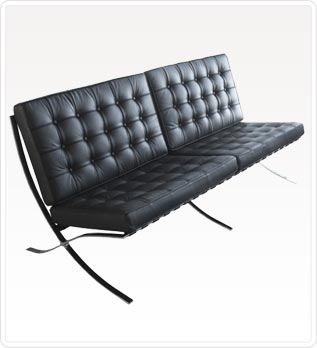Difference between revisions of "Contemporary furniture"
m (Contemporary Furniture moved to Contemporary furniture) |
|||
| (7 intermediate revisions by 4 users not shown) | |||
| Line 1: | Line 1: | ||
| − | Often it can be difficult to tell just by looking at a piece of furniture what category of style it falls into - at least for the average citizen who hasn't had the training to categorise furniture pieces. Much like a functional and ubiquitous art form, furniture can be divided into many different styles of design according to both aesthetic and utilitarian factors as well as the age of the piece. Contemporary furniture is just one part of a design history that has mirrored the progress of mankind since the first homes and cities were built. | + | Often it can be difficult to tell just by looking at a piece of furniture what category of style it falls into - at least for the average citizen who hasn't had the training to categorise furniture pieces. Much like a functional and ubiquitous art form, furniture can be divided into many different styles of design according to both aesthetic and utilitarian factors as well as the age of the piece. Contemporary furniture is just one part of a design history that has mirrored the progress of mankind since the first homes and cities were built. |
| + | |||
| + | [[Image:barcelona-chair-3-seater.jpg]] | ||
There are two basic ways to classify contemporary furniture amongst the myriad of other styles and designs available to you: the contemporary label encompasses either all furniture created since the Second World War or any modern designs. These two differentiations from other furniture styles make it clear that contemporary pieces are still being created within the minds of designers and in the hands of craftsmen. This is the most recent wave of design in a long line of stylistic changes and although many changes have been made alongside much experimentation since the Second World War, it still remains clear that furniture with a more modern appearance is essentially what this category holds, although there are more classical-looking pieces that are grouped together with these. | There are two basic ways to classify contemporary furniture amongst the myriad of other styles and designs available to you: the contemporary label encompasses either all furniture created since the Second World War or any modern designs. These two differentiations from other furniture styles make it clear that contemporary pieces are still being created within the minds of designers and in the hands of craftsmen. This is the most recent wave of design in a long line of stylistic changes and although many changes have been made alongside much experimentation since the Second World War, it still remains clear that furniture with a more modern appearance is essentially what this category holds, although there are more classical-looking pieces that are grouped together with these. | ||
| Line 8: | Line 10: | ||
Contemporary furniture, from a design perspective, is about taking furniture to a new level of comfort, simplicity and aesthetic beauty. | Contemporary furniture, from a design perspective, is about taking furniture to a new level of comfort, simplicity and aesthetic beauty. | ||
| + | |||
| + | [[Category:Furniture]] | ||
Latest revision as of 20:45, 8 December 2010
Often it can be difficult to tell just by looking at a piece of furniture what category of style it falls into - at least for the average citizen who hasn't had the training to categorise furniture pieces. Much like a functional and ubiquitous art form, furniture can be divided into many different styles of design according to both aesthetic and utilitarian factors as well as the age of the piece. Contemporary furniture is just one part of a design history that has mirrored the progress of mankind since the first homes and cities were built.
There are two basic ways to classify contemporary furniture amongst the myriad of other styles and designs available to you: the contemporary label encompasses either all furniture created since the Second World War or any modern designs. These two differentiations from other furniture styles make it clear that contemporary pieces are still being created within the minds of designers and in the hands of craftsmen. This is the most recent wave of design in a long line of stylistic changes and although many changes have been made alongside much experimentation since the Second World War, it still remains clear that furniture with a more modern appearance is essentially what this category holds, although there are more classical-looking pieces that are grouped together with these.
Perhaps the best way to grasp the meaning and design of contemporary furniture is to watch movies made in the 1960's and 1970's. Films like Dr. Stangelove and 2001: A Space Odyssey are full of supposedly futuristic, modern furniture that really was not so much futuristic but actually inherent particularly to those particular decades and were a precursor to modern contemporary furniture being built now.
While it might seem strange that this kind of furniture is classified in the same group as rather traditional-looking dining chairs and 'normal' coffee tables, one must remember that it is the actual design of these furniture pieces that has been created in the post-war era. Although some classic furniture designs from before WWII have easily survived the decades and still grace our homes, this does not mean that the design is modern - it is simply enduring. Contemporary furniture is relatively modern in terms of furniture history, and it is often identifiable from its smooth lines, simplistic approach and the use of newer materials, often different types of plastic.
Contemporary furniture, from a design perspective, is about taking furniture to a new level of comfort, simplicity and aesthetic beauty.
